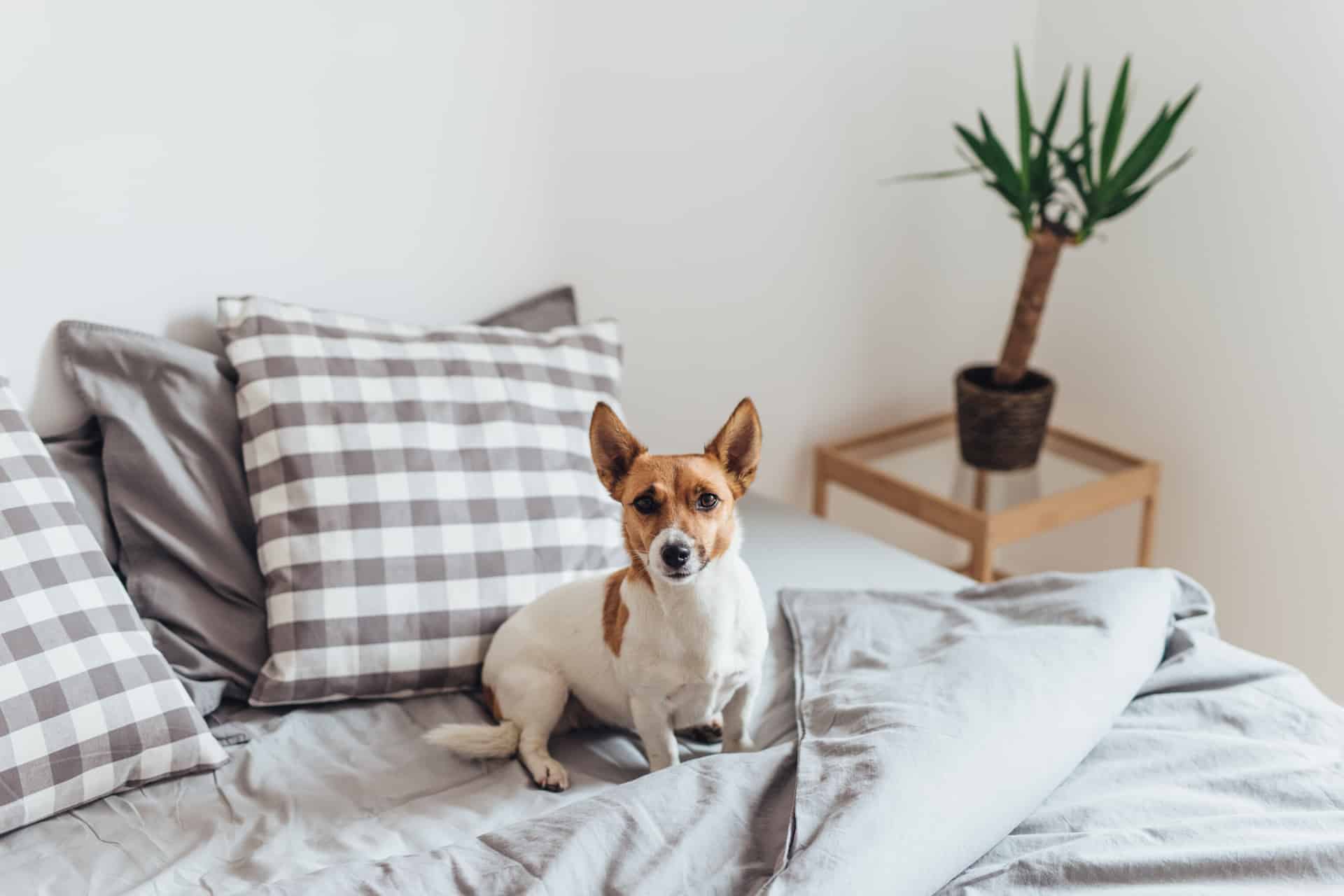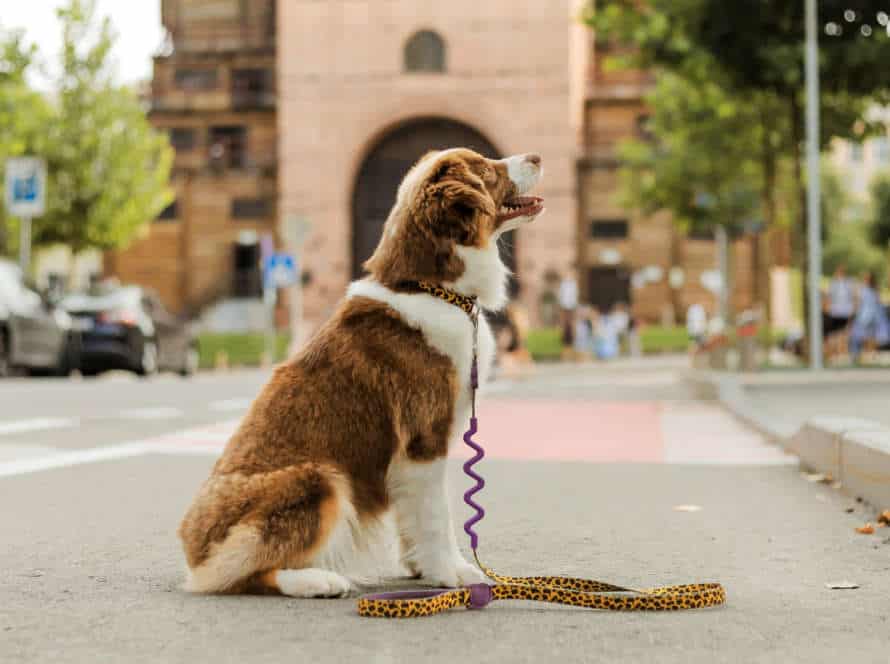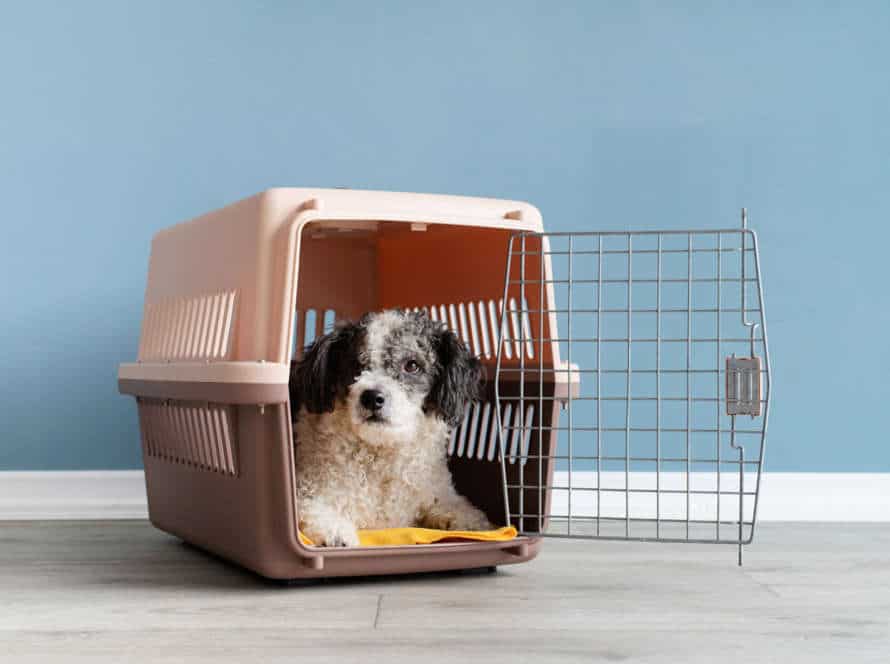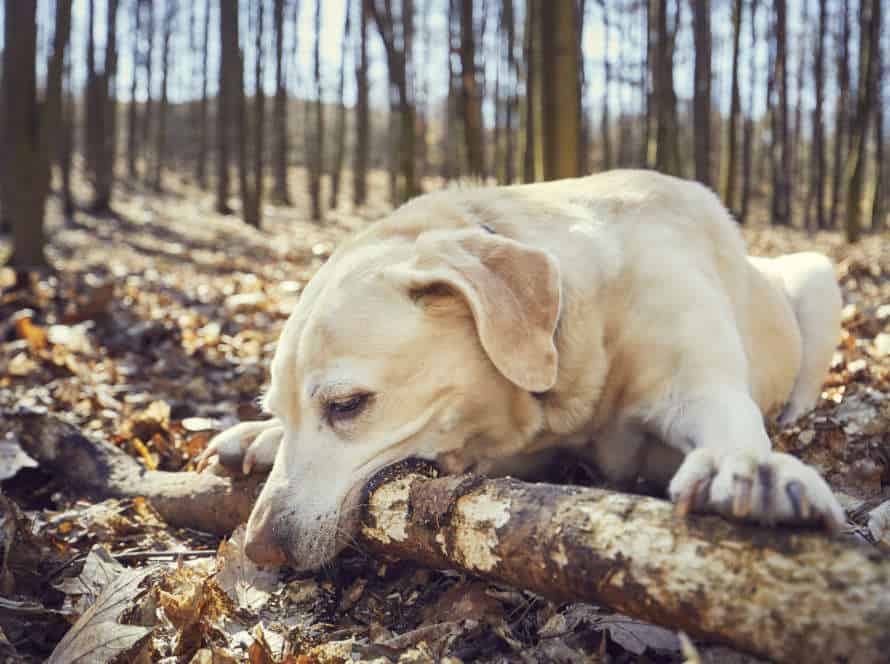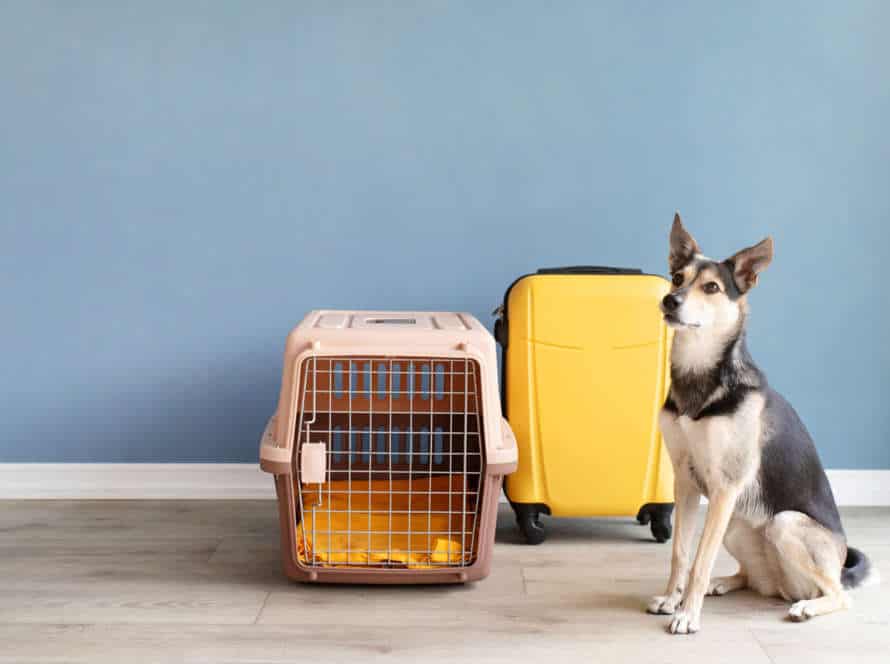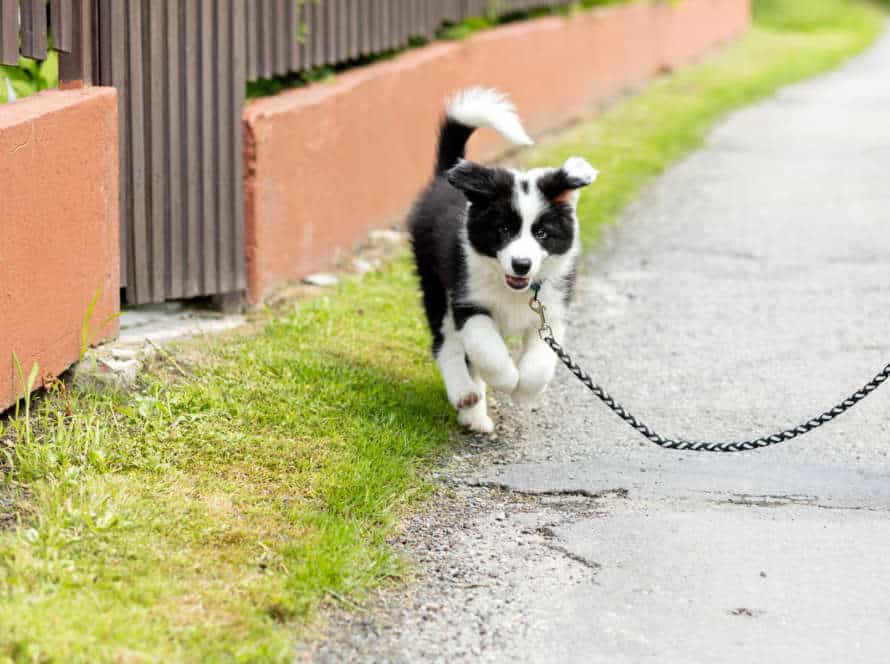Recognizing and Addressing Stress in Your Dog During House Training
House training can be a stressful experience for dogs. This can lead to unwanted behaviors like barking too much, aggressive behavior, and chewing on things. To have a successful house training process and reduce stress, it’s important to look out for signs of stress.
Common signs of stress in dogs during house training:
- Excessive drooling or panting
- Pottying inside, even right after going outside
- Refusing to go out
- Making noises like whining or barking
- Hiding, shaking, or shivering
To address stress in house training, you can:
- Make a calm and supportive environment
- Have a regular routine
- Give your pup enough exercise and mental stimulation
- Don’t use punishment-based training techniques
- Use positive reinforcement like treats, praise, and playtime to reward good behavior.
Signs of Stress in Dogs during House Training
House training a pup is hard work. It can be tough for both the dog and its owner. Recognizing your pet’s signs of stress is important. This way, the house training process can be successful and less stressful. Let’s look at the signs of stress a dog might show while house training.
Panting, whining or barking
Panting, whining, or barking? All common signs of stress in dogs while they’re being house trained. Knowing and responding fast can help ease their unease.
- Panting? If your pup is panting too much, it can be a sign of worry or distress. Ensure the training area is airy and try not to do it in extreme heat or humidity. Take breaks and give them water.
- Whining? Whimpering means they need to go out or are anxious. Go outside straight away and reward them for the right behavior.
- Barking? Loud barking can mean stress or frustration. Be patient and give lots of praise when they’re behaving well. If it continues, talk to a professional trainer or behaviorist.
Pro tip: Keeping to a consistent, positive routine makes house training easier for both you and Fido.
Shaking or trembling
Shaking or trembling may be a symptom of stress in dogs during potty training. It’s vital to spot and address this stress, so your pup feels safe and secure.
Here are some reasons why your pup might be anxious:
- Fear of punishment
- Potty training regression
- Overstimulation
To address stress in your pup during house training, you can do the following:
- Hand out treats and praise
- Stick to a predictable routine
- Provide a secure and comfortable environment
Always keep an eye on your pup’s body language and behaviour when potty training. Every dog is unique and may need different tactics, but with patience and consistency, your pup will soon be trained.
Pro tip: If your pup stays stressed, consider consulting with a professional dog trainer or vet for extra help.
Aggressive behavior or destructive chewing
Aggressive behavior or chewing destructively can be signs of stress in dogs during house training. Recognize and address stress in your pup to prevent bad behavior and make him happier and healthier.
Common signs of stress in dogs are too much barking, growling and biting things like furniture, clothes and household items. To address stress in your pup during house training:
- Take a break from training so he can relax.
- Assess his living situation and see if there are sources of stress.
- Adjust your training, environment and schedule to reduce stress and have positive behavior.
- Work with a pro dog trainer or behaviorist if needed.
Remember, house training can be hard and stressful for dogs. Be patient and understanding with your furry friend during training.
Reasons for Stress in Dogs during House Training
Housebreaking a doggy or an old pooch can be a tense period for both owner and pet. It’s necessary to acknowledge signs of stress in dogs, since it can cause future conduct issues. Causes of anxiety in dogs while housebreaking may be boredom, disarray, no regularity, dread, and disappointment. Let’s analyze more closely how we can tackle these matters.
Lack of familiarity with the environment
A lack of familiarity with their training environment may cause dogs to feel stressed during house training. This can lead to fear, anxiety and accidents.
As an owner, you should create a secure environment. This can be done by:
- Letting your dog explore the area before training.
- Establishing a routine for feeding, exercise and potty breaks. This helps create predictability.
- Using positive reinforcement like rewards and praise, to encourage good behaviour.
- Remaining patient and flexible throughout the process. This helps accommodate your dog’s needs and abilities.
With these steps, you can help your dog feel safe and comfortable. You will also build a stronger bond.
Separation anxiety
Separation anxiety is a common source of stress in dogs during house training. When apart from their owner, dogs may become fearful, agitated, or destructive.
Stress can be caused by home environment changes, lack of exercise/playtime, or too much too soon.
Recognize the signs of stress, such as barking, panting, or pacing. Seek professional help if needed.
To address stress during house training, establish a routine and provide a safe/comfortable space when away. Use positive reinforcement and start with short periods of separation, gradually increasing it.
Patience & consistency are key for training your furry friend.
Medical conditions
Dogs can be stressed during house training. Knowing why can help you keep them calm.
Medical conditions can cause stress. These include:
- Urinary tract infections. This can be painful and make urinating scary.
- Inflammatory bowel disease. This might lead to accidents in the house.
- Arthritis. This can make it hard to get up and move to the potty area.
If you think a medical condition is causing the stress, talk to your vet. Also, provide a steady training routine and lots of positive reinforcement. This will reduce stress and build their confidence.
Steps to Reduce Stress in Dogs during House Training
House-training your dog can be tough. For both pet and owner. It’s important to be aware of signs of stress in your pup. To guarantee a fun and successful house-training process. Here we’ll chat about steps to decrease stress in dogs while potty training.
Gradual Acclimation to the Environment
Gradual Acclimation to the Environment is key to reducing stress during house training for dogs. They can become overwhelmed in new surroundings and show signs of stress, like barking and crying. To make house training more pleasant, follow these steps:
- Start with a confined space, like a bathroom or playpen, so the dog can adjust to a smaller area.
- Introduce new sounds and smells gradually.
- Expand the dog’s territory in stages, starting with one small room at a time.
- Make the process positive with treats and verbal praise.
By taking these steps, owners can help their dog remain relaxed and stress-free during house training. This leads to a better experience for both pet and owner.
Positive Reinforcement Training
Positive reinforcement training is a great way to reduce anxiety while house-training your pup. It makes the learning experience more enjoyable for both! Here’s how to practice it:
- Reward good behavior with treats, praise, or a toy to reinforce it.
- Stay patient & consistent. Don’t use punishment, as it will just cause fear.
- If your dog looks stressed, take a break or change the environment.
- Gradually increase the length & complexity of each session, while offering positive reinforcement at each step.
By following these steps, you can help your pup feel calm & secure during house-training.
Regular Exercise and Playtime
Exercise and play are musts for reducing stress during house training. An active dog = a happy dog. Giving them regular playtime and exercise reduces their stress and helps their health.
Here are the steps:
- Prioritize play and exercise. Make sure your pup gets plenty each day.
- Be patient. House training takes time – don’t rush it.
- Set a routine. Feed them and take them out at regular intervals.
- Reward good behavior. Praise and give treats when they go potty outside.
- Be attentive. Look for signs of stress, like whining and barking. Regular exercise helps calm anxious dogs.
Pro Tip: House training is stressful. But with patience, consistent training, and lots of play and exercise, you can train your pup and have a happy relationship.
Additional Tips to Reduce Stress in Dogs during House Training
House training your pup can be tough! It can be stressful for both of you. When you bring your dog home, depending on the methods you use, it can be difficult. But, there are tips and tricks to reduce stress and make the process more rewarding. Check them out!
Use of Calming Pheromone Products
Calming pheromone products can help reduce stress in dogs during house training. These products mimic natural pheromones canines produce and emit a calming scent.
Here are five types of calming pheromone products to soothe your furry companion:
- Calming diffusers: Plug-in diffusers release a synthetic version of the pheromones found in a nursing dog’s mammary glands. This can help reduce stress and anxiety in your pup.
- Calming sprays: These contain synthetic pheromones and can be applied to your dog’s bedding or carrier.
- Calming collars: These collars release a constant stream of pheromones to alleviate stress in your dog.
- Calming wipes: These help remove anxiety-related scents and leave behind a calming pheromone scent.
- Calming supplements: These are oral medications with natural ingredients such as chamomile and valerian root. They can help your pup stay calm during training.
Remember, calming pheromone products are not a substitute for proper training techniques and positive reinforcement.
Pro tip: Consult with your vet before using any calming products. If you notice persistent symptoms of anxiety in your dog, seek professional advice.
Ensuring Proper Nutrition and Hydration
Proper nutrition and hydration are key for lowering stress in pooches during house training. Dehydration and bad nutrition can worsen stress and cause health issues.
Here are some tips for making sure your pup gets the right nutrition and hydration:
- Water – Offer clean water to your pup at all times. Change the water daily, and give more often during hot weather and after exercise. You can even put ice cubes in the bowl to get your pup to drink more.
- Food – Give your pup top-notch, nutrient-rich dog food that is proper for their age and breed. Read the labels carefully and avoid food that has fake preservatives, fillers, or by-products. Stick to the suggested feeding instructions on the package, and adjust as needed to keep a healthy weight.
- Treats – Use treats as rewards during house training, but don’t overdo it. Pick healthy, low-calorie treats with natural ingredients, and don’t give too many treats; it can lead to weight gain and digestive issues.
Pro tip: Chat with your vet to make sure your pup’s nutrition and hydration needs are getting met.
Consider Professional Training Assistance.
House training a dog might be a difficult situation for the pet and its owner. To reduce the stress and get better results, consider professional training.
Experts have years of practice with all kinds of dogs. Signing up for formal training gives you access to their knowledge and advice. They can show your dog house training techniques and help build good behavior. This makes training easier and faster.
Some tips to reduce stress in your dog during house training:
- Look for signs of stress like panting, barking, or pacing.
- Reward your pup for good behavior.
- Take breaks and give them exercise and outdoor time.
- Be patient and consistent. House training takes time.
Frequently Asked Questions
Q: How can I tell if my dog is experiencing stress during house training?
A: Some signs of stress in dogs include decreased appetite, excessive panting, shaking, pacing, accidents in the house, and avoiding the designated potty area.
Q: What can cause stress in dogs during house training?
A: Stress can be caused by a variety of factors including lack of consistency or structure, being punished for accidents, discomfort or pain, fear of going outside, and being left alone for too long.
Q: What can I do to address my dog’s stress during house training?
A: Creating a consistent routine, providing positive reinforcement for good behavior, staying calm and patient, identifying and addressing any physical discomfort or fear, and providing appropriate exercise and mental stimulation can all help to reduce stress for your dog during house training.
Q: Can I use medication to help my dog with stress during house training?
A: In some cases, medication may be prescribed by a veterinarian to help manage stress in dogs. However, medication should only be used in conjunction with other behavior modification techniques and under the guidance of a qualified veterinarian.
Q: Why is it important to address my dog’s stress during house training?
A: Addressing a dog’s stress during house training can help to prevent more severe behavioral issues in the future, build a stronger bond between dog and owner, and ultimately make the process of house training more successful and enjoyable for both the dog and the owner.
Q: How long can it take for my dog to become comfortable with house training?
A: Every dog is unique and the length of time it takes for them to become comfortable with house training can vary. Some dogs may become comfortable within a few days, while others may take several weeks or even months. Consistency and patience are key.

